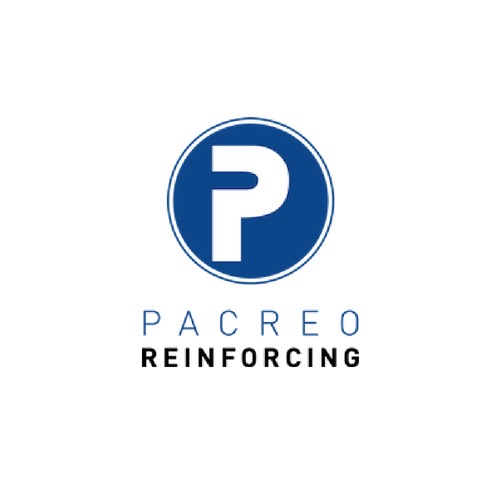Understanding Reinforcing Mesh and Its Versatile Applications
- Pacreo Reinforcing

- Sep 29
- 3 min read
Reinforcing mesh plays a crucial role in the construction industry. Often called welded wire mesh or reinforcement mesh, it significantly improves the strength and stability of concrete structures. This post explores the various uses of reinforcing mesh, its benefits, and why it remains a top choice among builders and engineers.
What is Reinforcing Mesh?
Reinforcing mesh consists of steel wires that are welded together to create a grid-like framework. This mesh is primarily used in concrete applications to add support and prevent cracking. The wires are arranged in a specific pattern to ensure even stress distribution across the concrete surface.
The main purpose of reinforcing mesh is to enhance the tensile strength of concrete. Although concrete is strong under compression, it is weak in tension. By integrating this mesh, builders can develop structures that are not only more durable but also more reliable over time.
Types of Reinforcing Mesh
Different types of reinforcing mesh cater to various construction needs. Here are the most commonly used types:
Welded Wire Mesh: The most prevalent option, this type features steel wires welded at intersections. It provides robust support for concrete applications and is often found in residential and commercial buildings.
Fiberglass Reinforcing Mesh: Lightweight and resistant to corrosion, fiberglass mesh is ideal for applications where traditional steel mesh may not be effective, such as in environments with moisture.
Stainless Steel Mesh: Often used in marine and chemical applications, this type of mesh delivers superior corrosion resistance, ensuring longevity.
Galvanized Mesh: Coated with zinc for added protection, galvanized mesh is excellent for outdoor projects, minimizing rust and corrosion risks.
Each type of mesh offers unique benefits, allowing builders to select the most appropriate option for their specific requirements.
Applications of Reinforcing Mesh
Reinforcing mesh finds a wide range of applications in construction, including:
1. Concrete Slabs
Reinforcing mesh is commonly used in concrete slabs, which form the base for residential and commercial structures. Incorporating mesh helps distribute loads evenly. For instance, using mesh in a 100-square-meter slab can reduce cracking by up to 30%.
2. Walls and Foundations
In wall and foundation construction, reinforcing mesh ensures these structures withstand forces over time. For example, a properly reinforced foundation can bear significantly greater loads, leading to fewer structural failures.
3. Driveways and Pavements
Reinforcing mesh is critical in driveways and pavements, especially in regions with extreme weather. It prevents cracking caused by heavy loads and temperature fluctuations, enhancing the lifespan of surfaces.
4. Precast Concrete Products
Reinforcing mesh is integral to precast concrete products like beams, columns, and panels. These products gain strength and durability, making them suitable for various projects. For example, precast elements reinforced with mesh can exhibit 15% greater tensile strength compared to those without.
5. Retaining Walls
In landscaping and civil engineering, reinforcing mesh provides essential support for retaining walls. It prevents soil erosion and supports the structure's integrity, protecting investments in landscaping.
6. Swimming Pools
Reinforcing mesh contributes to swimming pool construction, ensuring that the pool shell remains structurally sound. This mesh can help reduce cracks and prolong the pool’s life.

Benefits of Using Reinforcing Mesh
Incorporating reinforcing mesh into construction projects offers multiple benefits:
Increased Strength: It significantly enhances the tensile strength of concrete, making structures more durable. Statistically, structures with mesh can last up to 50% longer than those without.
Crack Prevention: By ensuring even stress distribution, reinforcing mesh lowers the likelihood of cracks developing in concrete surfaces.
Cost-Effective: Utilizing reinforcing mesh can decrease maintenance needs and repair costs by as much as 20% over time.
Versatility: Various types of mesh allow builders to select the right solution for their project's unique demands.
Ease of Installation: Reinforcing mesh is straightforward to install, contributing to efficient construction processes.
Considerations When Using Reinforcing Mesh
Despite its advantages, there are important considerations to keep in mind:
Proper Placement: Correct placement of mesh is vital for achieving optimal strength and performance within the concrete.
Compatibility with Concrete Mix: The concrete mix must match the characteristics of the reinforcing mesh to ensure good bonding and performance.
Local Building Codes: Always verify local building codes and regulations for compliance when incorporating reinforcing mesh into construction projects.
Key Takeaways
Reinforcing mesh is essential in modern construction, providing strength and stability to various structures. Its versatility allows for applications from concrete slabs to swimming pools. By understanding the different types of reinforcing mesh and their specific uses, builders can make informed choices that lead to durable and reliable projects.
Incorporating reinforcing mesh not only bolsters the structural integrity of concrete but also delivers cost-effective solutions for maintaining and repairing buildings over time. As the construction industry progresses, the significance of reinforcing mesh will continue to be crucial in developing resilient structures.




Comments